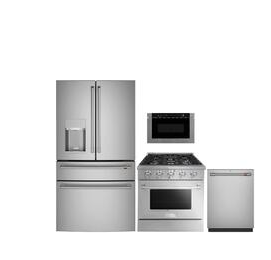How to choose cooktops?

An efficient cooktop is necessary for every kitchen, whether it's in the kitchen of a budding chef or a modest office kitchen. Is it better to use a gas, electric, or induction cooker? In this article, we'll help you weigh all of the benefits and drawbacks of various cooktops so you can make the best selection possible.
In the kitchen, the countertop is the most often utilized equipment. If cooking is your passion or needs to heat things fast, you can't go without it. The first step in selecting the proper model is to choose which kind of hob best matches your needs: gas, glass-ceramic, or induction.
The size and number of burners or cooking zones are further considered. In terms of measurements, you'll need to know how much room you have on your kitchen counter. The depth is usually standard (51 cm), whereas the width varies from 30 to 90 cm depending on how many cooking stations or burners are included. Cooktops come in a variety of shapes and sizes.
Choose cooktops based on the energy you use

Cooktops are divided into two categories based on the energy they use: gas or electric.
Gas hob
A gas hob is simple to light and operate, and it enables you to regulate the power of the burners and the cooking. It is one of the most cost-effective cooking methods available.
They heat up faster than electric ones, which is why they are the most energy-efficient and environmentally friendly. They may be used with any cookware. They presently have security procedures that make their users safe and risk-free (automatic gas shutdown in flame extinction). It has a significant benefit in terms of quick control over the heat it generates. It takes the same amount of time to heat up as turning off the heat source by turning off the flame. It's for this reason that it's the most popular among chefs.
The "triple crown" is awarded to those who perform the best. It is the term given to the large burner, which contains three concentric gas rings. Your gas stove must have a "triple crown" if you wish to cook with it. Also, it is equipped with cast iron grills, which do not burn or distort when heated by a gas plate. It will provide you with a level, secure platform on which your pots, whatever their size, will always be supported and steady.
Its main downside is the time it takes to clean them since you have to make sure the burners aren't blocked. They also need to be inspected regularly to ensure that the gas is working correctly and that leaks are not occurring.
These plates may use with either city gas or bottled gas (a standard NF input and connector) (butane). However, it would help if you remembered to replace the burners that are not the same in both circumstances. The gas stoves come with two sets of burners.
The electric plates can be of two types: ceramic hob and induction hob.

Ceramic hob
It works by heating specific resistances and transmitting that heat to the glass covering them, which an inbuilt thermostat can control. This method provides heating and cooling cycles that will be shorter depending on how powerful the ceramic hob will be, making the ceramic hob cook quicker.
They let you use the excess heat after they've been switched off. They are compatible with most containers (pans and saucepans, except clay pots). They're simple to clean. They are less expensive than induction, but they require more energy. They now include features such as shutdown programming and security lock.
Induction hob
It has impressive performance and is simple to use. They generate magnetic fields to heat meals. Because the plate does not become hot, food or minor spills that fall on it do not stay and can be readily wiped. It is safer and cleaner.
They are faster and more efficient than the other electric stoves due to their technology. They save up to 40% on power compared to traditional ceramic hobs. Only those with a ferromagnetic base may use these plates, which necessitates particular containers. Bring a magnet near the bottom of your pots and pans to see whether they may use on your induction stove. What happens if it gets stuck? Yes, the casserole may use.
Ceramic hobs release about 450 grams of CO2 per kWh, compared to 360 grams for induction hobs.










